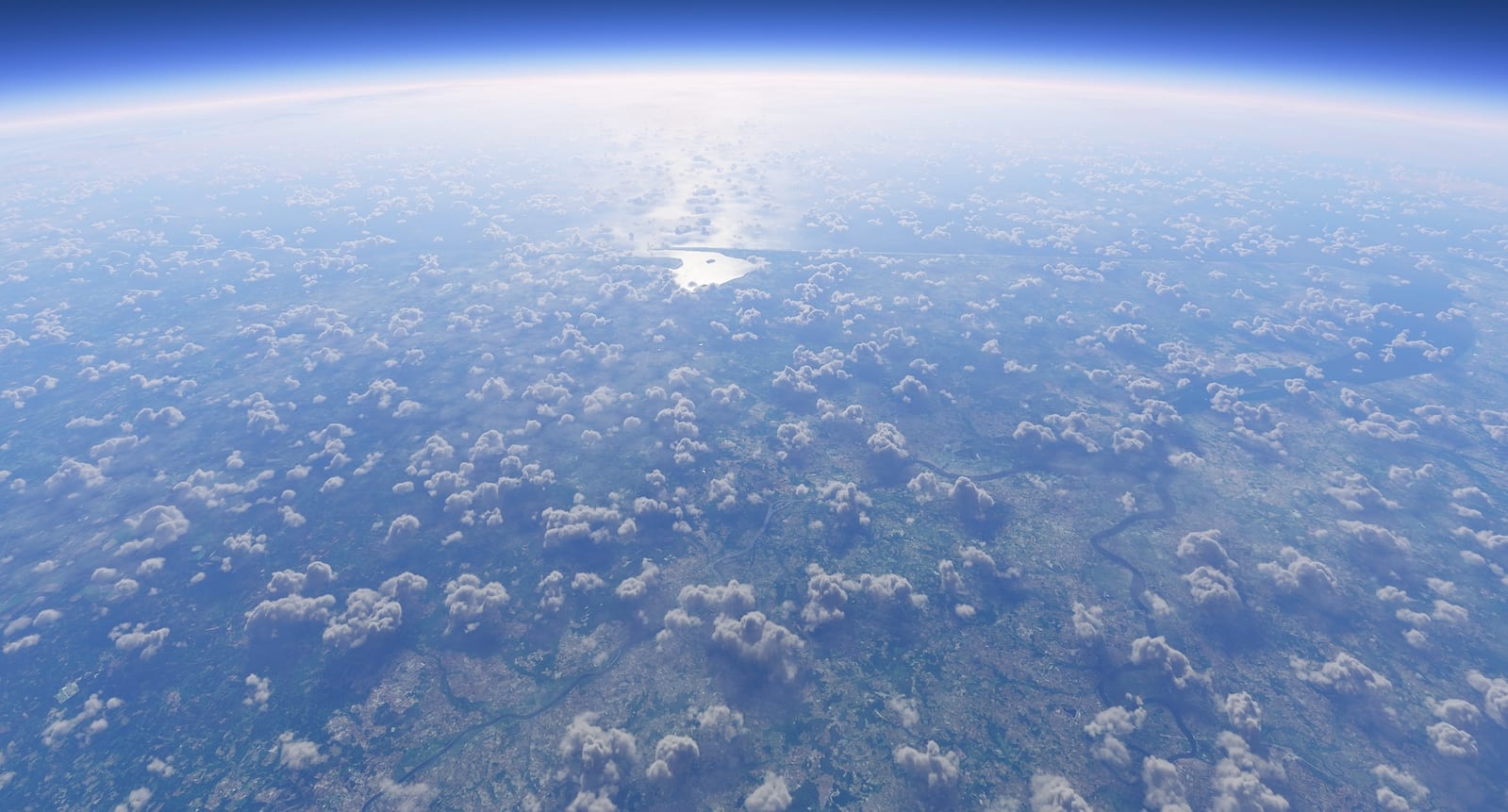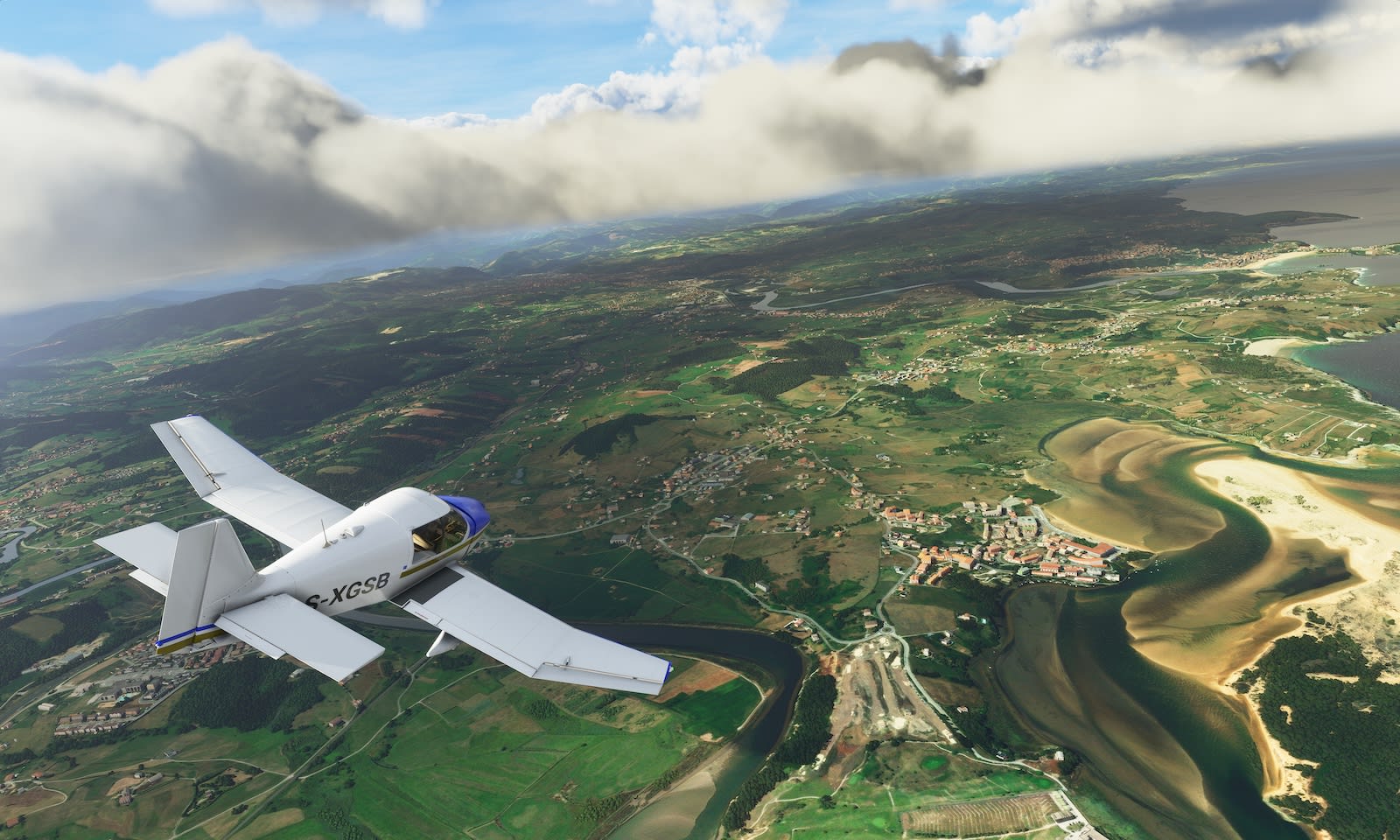It feels like Flight Simulator was made for exactly this scenario: coming down after a long day. But, after soaring around a digital Earth for four hours, casually exploring exotic and familiar locations, it’s clear that the game offers plenty more than mere relaxation — though developers at Microsoft and Asobo Studio would recoil at the term “game.” Flight Simulator is too deeply researched and technically detailed to be anything less than a full-on simulation experience, in their eyes. And, even in pre-alpha, that seems to ring true.
Hands-on with Flight Sim
The first location I loaded up was Phoenix, Arizona, my hometown. I wanted to see if the map in Flight Simulator would be accurate enough for me to recognize landmarks, follow highways and even spot specific houses. Besides, Phoenix is gorgeous, especially at sunset — the airport sits at the heart of a desert valley, saguaros and skyscrapers highlighted from the west in brilliant purples and reds.
I flew over my former condo complex.
Not only did I recognize the airport immediately, but also every side street, skyscraper and mountain range that came into view. Keeping my tiny plane aloft, I clicked through the settings menu at the top of the screen, and shifted the weather and time of day, making the sun and stars streak across the sky. I chose scattered clouds, just as the fading light turned golden. I clicked back and continued flying, tapping the rudder and shifting the wings gently to one side, aiming for the row of high-rises marking downtown. The engine whirred and I pulled the nose of the plane upward, compensating for power lost in the turn.
Each prominent building was accurate and in the correct location, including unique architectural details, company logos and store names. I flew over my former condo complex and saw the exact balcony where I would sit and listen to podcasts while watching the city lights flicker on; I soared over Central Avenue and through the gaps between buildings that I’ve only ever viewed from below. The roof of Chase Field was open, baseball diamond clearly visible within.
Around me at the Flight Simulator preview event in Seattle, other journalists were checking out their own hometowns, buzzing The Vatican, marveling at Machu Picchu and getting a feel for the geography around the Egyptian pyramids. I crashed my plane into a South Phoenix neighborhood — landing is by far the most difficult aspect of Flight Simulator — and booted up a location I’d never visited in real-life: Dubai. Again, I took off, switched to a third-person view, and shifted the environment to my liking. Every trip began with a real-time representation of the actual weather and time in each location, but I wanted to see sunsets and clouds. I set Dubai to rain.
It felt fantastic to learn more about the world in a random flyby.
Even through heavy vapor and moisture, the Burj Khalifa was easy to spot, shooting out of the desert landscape like a shining silver beacon. As I approached, more buildings popped into view. I dropped low along the coast and spotted curious shapes in the water that eventually coalesced into a giant, stylized palm tree. I paused the game briefly and turned to my phone, where I learned this was one of the Palm Islands, a trio of man-made archipelagos hosting hotels and fancy residences. I’d never heard of the islands before, and it felt fantastic to learn more about the world in a random flyby.
Flight Simulator had that effect on me time and time again. It made the planet feel accessible yet impossibly vast. There was a sense that I could go anywhere in that plane, but once I hit altitude, the immensity of the world set in, and I felt impossibly tiny. Not in a bad way — simply in a true, realistic sense. You know, like in a simulator.
Bing Maps, but better
The Flight Simulator franchise is Microsoft’s longest-running software property. It’s older than Windows by three years, with the original title released in 1982. It gets a refresh every few years, taking advantage of evolving computer technology with each launch; the most recent title was Flight Simulator X: Steam Edition, which landed in 2014.
A lot has changed since then.






